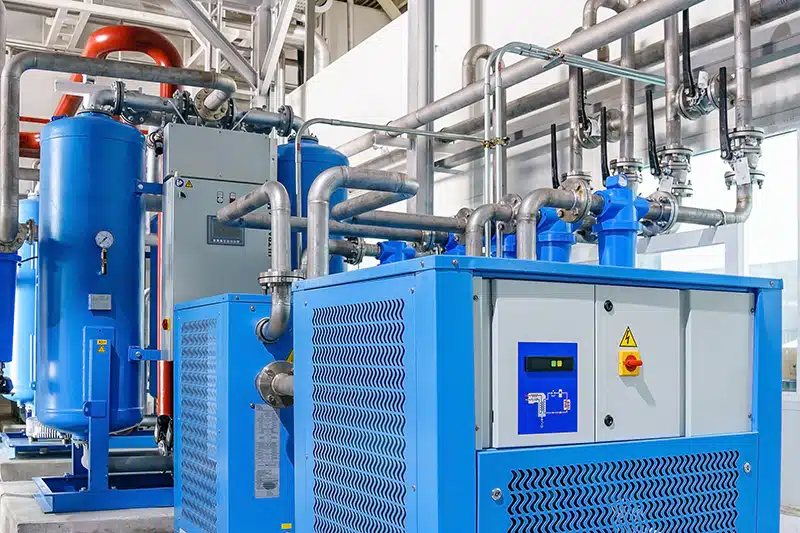In a factory, compressed air is as essential as electricity and water. It powers pneumatic pistons, tools, cleaning equipment, and more. The challenge, however, is keeping the lines moisture-free, since air in the lines can easily form condensation
What is Pressurized Dew Point?
There’s always moisture present in the ambient air (think humidity). When the air temperature drops, the moisture condenses and forms dew. Dew point is defined as the temperature at which this occurs. When the air is pressurized, or compressed, condensation forms at a higher temperature than the ambient air. This temperature is the pressurized dew point. The dew point varies depending on both humidity and air pressure levels. In a manufacturing environment, problems occur because team members may not realize that condensation has formed in the air lines.
Why is Moisture in Compressed Air Lines a Problem?
Moisture in the compressed air lines can lead to a number of problems, ranging from annoying to significant, but all with an impact to your bottom line. Issues include:
- Corrosion in machinery. Over time, moisture can wash away oils in lubricants in machine parts, eventually leading to a breakdown. This means downtime and possibly costly parts replacement.
- Compromised product quality, especially in the pharmaceutical or food processing sectors. Impurities from the moisture in the compressed air used to dry products can contaminate them. This could mean a shorter shelf-life, or a potential product recall
- Decreased efficiency in pneumatic controls. High levels of moisture in pneumatic lines impact their efficient movement.
Keeping airlines moisture-free is a critical task to prevent lost efficiency, lost work time, or lost product.
How to Prevent Moisture in Compressed Air Lines?
Air dryers are the tried-and true method of keeping the compressed air dry, but how can you be sure your air dryers are doing their job? You can find out later, when something breaks down or you get a bad batch of product, or you can find out as soon as the air leaves the dryer with continuous monitoring from our Pressurized Dew Point (PDP) sensor.
How Does a Wireless Pressurized Dew Point (PDP) Sensor work?
Phase IV’s innovative design integrates the Michell Instruments Easidew dew point transmitter with our Leap Sensors wireless transceiver node. This makes it easy to monitor compressed air as soon as it leaves the dryer, so you can immediately detect moisture-related issues before they become a problem elsewhere in your processes.
Features of the wireless PDP sensor include:
- Easy Retrofitting: The PDP sensor’s wireless design makes it easy to retrofit onto your existing equipment without the need for complicated wiring or extensive modifications. This makes it a convenient and cost-effective option for upgrading your compressed air system or for temporary monitoring for troubleshooting
- Integration with Leap Sensors System: The PDP sensor seamlessly integrates with Leap Sensors’ comprehensive industrial monitoring system. By incorporating the PDP Sensor into the overall monitoring setup, you gain complete visibility and control over your compressed air quality, enhancing operational efficiency and minimizing risks.
- Exclusive Offering: Leap Sensors is the only company in the market to provide this groundbreaking PDP Sensor. By choosing their reliable and technologically advanced solution, you can stay ahead of the competition and safeguard your industrial processes from moisture-related problems.
Leap Sensors’ PDP sensor offers a ground-breaking approach that makes continuous monitoring of the dew point in compressed air lines simple and effective. By detecting moisture-related problems as soon as the air leaves the dryer, the PDP sensor helps prevent breakdowns, maximizes equipment lifespan, and ensures consistent product quality. Upgrade your industrial monitoring system with the PDP sensor and experience the transformative benefits of real-time compressed air quality monitoring. Talk with one of our experts about how the PDP sensor applies to your specific application today.
